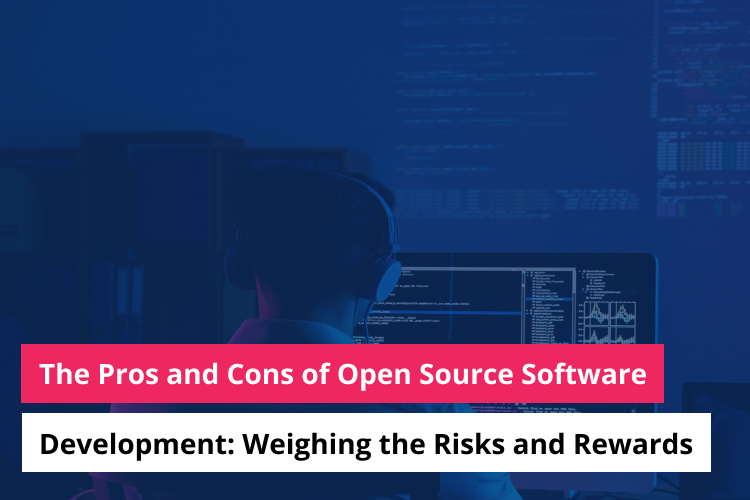5 Power Strategies for Success in Database Development

In digital infrastructure era, expertise in efficient database design and management surpasses mere competence—it becomes cornerstone of strategic advantage.
Among the rapid pace of technological innovation, the quest for scalability appears as a foundational necessity.
Scalability is more than feature; includes resilience of databasesystem to accommodate exponential data growth, dynamic user demands without compromising performance. From the meticulous art of normalization and data modeling to the sophisticated strategies of horizontal and vertical partitioning, designing with scalability in mind lays the groundwork for an architecture poised to thrive amidst the ebb and flow of digital flux.
Yet, in network of digital domains, search for mastery extends beyond mere scalability—it encompasses sanctity of datasecurity, regulatory compliance. As cyber threats heighten and regulatory frameworks tighten their grip, safeguarding sensitive information becomes an essential importance. Through the careful implementation of access controls, encryption protocols, and complete auditing mechanisms, the fortification of data security not only protects against external movements but also nurtures a culture of trust and integrity.
Join us on journey where data security is not merely compliance checkbox but a cornerstone of organizational resilience and reputation.
Let’s keep learning about 05 powerful strategies of database development. Keep going!
1. Design with Scalability in Mind

Designing with scalability in mind is a fundamental principle that supports the success of any database system, especially in today’s era of explosive data growth and dynamic business requirements.
Scalability is skill of database system to manage increasing volumes of data, users, transactions while maintaining maximum performance and reliability. A scalable database design accommodates current needs and also expects future growth and expansion without requiring significant architectural revises.
Normalization and Data Modeling
Normalization is one of the pillars of scalable database design which includes organizing data into organized tables to minimize repetition and ensure data integrity. It sets the ground for a scalable and maintainable database scheme by removing repeated data and reducing anomalies such as:-
- Update anomalies
- Insertion anomalies
- Deletion anomalies
Through careful data modeling, database developers can identify entities, attributes, and relationships, thereby creating a logical outline that can adjust company needs and make room for more data in the future.
Horizontal and Vertical Partitioning
Horizontal and vertical partitioning are methods used to distribute data across multiple storage resources, in this way, small businesses can increase scalability and performance.
Firstly, Horizontal partitioning, also known as sharding, includes dividing a large table into smaller subsets called shards and distributing them across multiple servers or nodes. This allows parallel processing of queries and transactions, therefore small businesses can increase scalability and reduce the load on individual servers.
On the other hand, Vertical partitioning involves splitting a table vertically based on columns, with each partition containing a subset of columns. This technique is particularly useful for isolating frequently accessed columns or columns with large data volumes, thereby improving query performance and scalability.
Indexing and Query Optimization
In optimizing query performance and increasing the scalability of a database system the term indexing plays a vital role.
Developers can speed up data retrieval, minimize need for full table scans by creating appropriate indexes on frequently queried columns. However, it’s necessary to make a balance between the number of indexes and the overhead they apply on write operations, as excessive indexing can degrade write performance and increase storage requirements.
Additionally, query optimization techniques such as query rewriting, join optimization, and utilizing covered indexes can further improve query performance and scalability, enabling the database system to efficiently handle increasing workloads.
Data Partitioning Strategies
You should consider data partitioning strategies based on characteristics of data, workload patterns if you are designing scalable database system. Here are three partitioning you must know:-
Range partitioning involves partitioning data based on a predetermined range of values, such as time intervals or numeric ranges.
List partitioning involves partitioning data based on discrete values or ranges specified by the developer.
Hash partitioning assigns data across partitions based on hash function, ensuring more uniform distribution of data and load across nodes.
By selecting right data partitioning strategy database developers can achieve maximum scalability and performance based on specific requirements of apps.
Cloud-Native Architectures and Auto-scaling
Nowadays lots of small businesses/enterprises use cloud-native architectures because they are scalable and versatile with the arrival of cloud computing.
Cloud-native databases like Amazon Aurora, Google Cloud Spanner, and Azure Cosmos DB, are simply built to autonomously adjust their resources based on the varying work they need to manage. It means they may expand as needed without requiring manual involvement, making it easier for enterprises to manage data effectively.
By using cloud-native databases and auto-scaling capabilities, businesses can strongly modify resources based on demand, ensuring maximum performance and cost efficiency.
2. Ensure Data Security and Compliance

To confirm data security and compliance are leading in database development, given the rising threats to data privacy and the growth of regulatory requirements worldwide.
A powerful data security and agreement strategy not only protects sensitive information but also creates trust among stakeholders and protects businesses from potential legal and financial liabilities.
Let’s delve deeper into the key components of confirming data security and compliance:
Access Control Mechanisms
Access control techniques are the first barrier to securing data from illegal access.
Applying strong authentication and authorization steps, like role-based access control (RBAC) and multi-factor authentication (MFA), confirms that only authorized users can enter sensitive data and perform specific actions within the database system.
Granular access controls should be mandatory at database and application levels, restricting access to sensitive data basedon least liberty principle. Regularly check and update access permissions to align with changing business requirements and workforce roles.
Data Encryption
Data encryption is very important for protecting data privately both at rest and in transit.
Using industry-standard encryption algorithms to encrypt data stored in the database, confirms that even if illegal users get entrance into the necessary storage, the data remains unreadable without the decryption key.
In addition, applying encryption protocols like SSL/TLS to secure data delivery between the app and the database server, reducing the risk of data interception and spying. Encryption clues should be managed securely, following the best actions for key generation, storage, rotation, and cancellation.
Data Masking and Anonymization
Data masking and anonymization systems help protect sensitive information. This process confirms that data remains safe when used for non-production environments and third-party stakeholders.
Masking allows authorized users view truedata when sensitive information has to be protected, suchas your identity, financial information, medical records. Others will only view anonymized or modified copies of the data. In this way, you can protect sensitive information from misuse or illegal access.
You can also use techniques like tokenization, pseudonymization, and generalization to anonymize data following guidance demands and privacy policies.
Auditing and Logging
Complete auditing and logging methods are very important for monitoring database activities, detecting security incidents, maintaining adaptability with guiding standards.
Allow auditing feature the database management system (DBMS) provides to capture detailed information about user actions, database schema changes, and access attempts. Store audit logs securely in centralized location with restricted access, confirming morality, availability for forensic analysis and compliance reporting purposes.
Regularly check audit logs, analyze anomalies, and investigate suspicious activities to recognize potential security problems and compliance violations strongly.
Compliance with Data Protection Regulations
When dealing with sensitive personal data, businesses must follow agreements with rules like GDPR, HIPAA, and CCPA. These rules specify how data should be acquired, kept, and utilized to keep people’s privacy. GDPR is applicable in Europe, HIPAA in healthcare in the United States, and CCPA in California. Applying these guidelines helps to avoid data violations and verify that people’s personal information is handled appropriately.
Ensure that you are aware of the particular legal requirements that are related to your company.
Install the appropriate safeguards and steps to stick to these guidelines. This could include getting precise consent before using someone’s data, setting up guidelines for data retention, indicating a person to oversee data protection (such as a data protection officer), and developing a system for individuals to exercise their rights regarding their data, such as requesting access to it or its cancelation.
Regular Security Assessments and Penetration Testing
Businesses must recognize the volatiles and weaknesses in the database structure and apps with regular security assessments and penetration testing.
You should hire certified security experts or ethical hackers to do detailed security valuations. Penetration tests and vulnerability scans should be performed to find weaknesses or possible points of entry that attackers may misuse.
Rectify identified vulnerabilities promptly and apply security patches and updates to reduce risks effectively. In addition, set up a culture of security awareness among database administrators, developers, and end-users through training and education programs.
3. Optimize Performance through Query Tuning

Optimizing the performance of database development through query tuning is important for making the database more faster and effective. Developers can minimize execution times, reduce resource consumption, and improve overall system throughput by fine-tuning database queries.
Let’s explore the key strategies and techniques involved in optimizing performance through query tuning:
Query Analysis and Profiling
Analyzing and profiling is the first step in query tuning. It allows to identification of database problems, performance delays, and failures. Utilize database profiling tools and query performance plans to obtain insights into query execution times, resource utilization, and access patterns.
Recognize long execution times queries, highCPU or I/O usage, useless query plans, as these are prime candidates for optimization. Additionally, monitor database metrics suchas CPU usage, memory utilization, disk I/O latency to pinpoint performance issues at system level.
Indexing Strategies
Indexing is significant in optimizing query performance by permitting efficient data retrieval and minimizing the need for full table scans. Calculate existing indexes and create additional indexes on columns frequently used in filter conditions, join predicates, and order by clauses. However, avoid over-indexing, as excessive indexes can degrade write performance and increase storage overhead. Consider composite indexes for queries involving multiple columns, use covering indexes to satisfy query requirements without accessing underlying table data.
Query Rewriting and Optimization
Query rewriting includes restructuring SQL problems to improve performance without changing their semantic meaning. Identify suboptimal query patterns such as nested loops, full table scans, and unnecessary joins, and rewrite queries using more efficient forms.
Utilize query hints, optimizer hints, and query plan leads to influence the query optimizer’s decisions and apply specific execution plans. Break down complex inquiries into smaller, more manageable parts, and use common table expressions (CTEs) and temporary tables to simplify query logic and increase readability.
Statistics Management
Accurate and up-to-date statistics are vital for the question optimizer to generate optimal execution plans. Regularly update table and index information using the database’s built-in statistics maintenance tools or custom scripts.
Analyze the distribution of data values and column cardinality to ensure that the query optimizer makes informed decisions when selecting execution plans. Monitor the effectiveness of statistics updates by comparing query performance before and after statistics maintenance operations and adjust the frequency of updates as needed.
Parameterization and Plan Caching
Parameterization involves replacing literal values in SQL queries with parameter placeholders to promote plan reuse and reduce plan compilation overhead. Use parameterized inquiries or stored procedures to confirm that queries with varying parameter values share a single execution plan, thereby avoiding plan cache bloat and unnecessary recompilations.
Monitor plan cache utilization and review cached execution plans regularly to identify plan cache fragmentation and optimize memory usage.
Resource Management and Query Throttling
Implement resource management and query throttling mechanisms to prevent resource contention and ensure fair access to database resources.
Set appropriate limits on concurrent connections, query execution time, and memory usage to stop runaway questioning from monopolizing system resources. Utilize workload management features given by database management system to focus important workloads and assign resources based on business preferences. Monitor system performance and adjust resource allocation dynamically to accommodate changing workload patterns
4. Embrace Automation and DevOps Practices

Adapting automation and DevOps practices modernize the way database development and management are approached, allowing businesses to achieve higher capability, agility, and reliability in their software delivery system.
By adding automation into every stage of the database lifecycle, from development and testing to arrangement and monitoring, teams can simplify processes, reduce manual overhead, and speed up time-to-market.
Let’s explore the key qualities of embracing automation and DevOps practices in database development:
Continuous Integration (CI)
Continuous Integration is software development custom where developers combine code changes into shared storehouse frequently, usually multiple times a day.
Within the framework of database development, CI includes automating the process of merging database scheme changes, data migrations, and test scripts into a version-controlled repository, such as Git.
By automating the build and validation of database changes, CI confirms that challenges and integration problems are detected early, facilitating collaboration and reducing the risk of regression errors.
Continuous Deployment (CD)
Continuous Deployment expands the principles of CI by automating the deployment of validated code changes to production environments.
Under flags of database development, CD includes automating the deployment of database scheme changes, configuration updates, and data migrations to production databases using deployment automation tools and scripts.
By normalizing deployment processes and removing manual concerns, CD allows businesses to give new features and upgrades to end-users quickly while maintaining uniformity and stability across environments.
Infrastructure as Code (IaC)
The term used by developers in database development to manage and set up computer resources such as servers and networks is called Infrastructure as Code. It is a method that automates framework arrangements, provides tasks using code and tracks change side-by-side app code.
IaC includes defining database framework demands, such as server configurations, storage allocations, and network settings, using declarative or imperative code templates, such as Terraform or AWS CloudFormation.
By treating database frameworks as code, teams can supply, configure, and manage database environments consistently and reproducibly, reducing deployment errors and minimizing manual overhead.
Automated Testing and Quality Assurance
Automated testing plays a huge role in confirming the quality and stability of database apps.
Applying automated testing frameworks and tools to automate unit tests, integration tests, and regression tests for database schemes, stored procedures, and data integrity constraints.
Leverage database mocking and stubbing techniques to simulate external dependencies and isolate database interactions during testing. Additionally, integrate database testing into CI/CD pipelines to automate test execution and validation as part of the deployment process, ensuring that only verified changes are promoted to production.
Monitoring and Alerting Automation
Effective monitoring and alerting are necessary for strongly recognizing and addressing performance problems, security vulnerabilities, and operational irregularity in database environments.
Applying monitoring automation solutions that grab key performance metrics, such as CPU usage, memory utilization, query latency, and disk I/O throughput, in real-time.
Arrange automated alerts and notifications to notify stakeholders of important activities, such as database outages, performance degradation, or security violations, allowing timely response and recovery actions.
Continuous Learning and Improvement
Businesses are required to make an environment of continuous learning and improvement to involve the automation and DevOps routine.
To motivate teams businesses should adopt new technologies, tools, and best practices using training programs, workshops, and knowledge-sharing sessions.
Supporting a collaborative environment where developers, database administrators, and operations teams work together to identify delays, share insights, and apply creations that increase automation, efficiency, and stability overall in the database development lifecycle.
5. Invest in Continuous Learning and Skill Development

Investing in continuous learning and skill development is noticeable for professionals working in database development.
As technologies, tools, and best customs keep changing, staying informed of the latest trends and progress is vital for maintaining relevance, advancing career prospects, and delivering value to businesses.
Let’s learn the basic points of investing in continuous learning and skill development in relation to database development:
Stay Updated with Emerging Technologies
The database technologies landscape is constantly changing, with new databases, frameworks, and platforms emerging regularly.
Stay informed about developing technologies like cloud databases, NoSQL databases, graph databases, and in-memory databases. Consider their features, capabilities, and use cases to understand how they can address progressive business requirements and performance challenges.
Experiment with hands-on tutorials, sandbox environments, and proof-of-concept projects to obtain practical experience and insights into new technologies.
Participate in Online Courses and Training Programs
Online courses and training programs offer convenient, flexible way to take new skills and deepen existing knowledge in database development.
Look into platforms such as Coursera, Udemy, and LinkedIn Learning for various programs on database design, SQL programming, performance optimization, and data management.
To approve your expertise, increase your credentials in specific database technologies you can register in specialized certification programs, such as:-
- Oracle Certified Professional (OCP)
- Microsoft Certified: Azure Database Administrator Associate
- AWS Certified Database Specialty
Attend Workshops and Conferences
In database development, attending conferences, workshops, and industry events can give significant advantages.
To join these events you can get the chance to network with influential individuals, pick the brains of subject matter experts, and remain current on best customs and developing trends in database systems.
You may attend important conferences like AWS re:Invent, Microsoft Ignite, or Oracle OpenWorld.
You may participate in practical laboratories, attend technical talks, and contribute to database-related networking activities at these events.
Group with industry thought leaders, participate in board discussions and join community meetups to interchange ideas, share experiences, and stay connected with the broader database development community.
Join Online Communities and Forums
Online communities and forums help as useful resources for learning, collaboration, and knowledge-sharing among database professionals.
Attend forums such as Stack Overflow, Reddit’s r/Database, or database-specific communities on LinkedIn or Discord to ask questions, searching advice, and contribute to discussions on database-related topics.
Having a hand in online hackathons, coding challenges, and collaborative projects to refine your skills, solve real-world problems, and learn from the experiences of others in the community.
Explore Hands-On Projects and Experiments
Hands-on projects, experiments provide realistic options to apply theoretical knowledge, experiment with new technologies, develop problem-solving skills in database development.
Start by making small-scale projects, such as:-
- Create a personal blog with a database backend
- Develop simple CRUD (Create, Read, Update, Delete) apps
- Design a database scheme for a fictional e-commerce platform
Slowly expand scope and difficulty of projects as you obtain confidence, proficiency, handling more challenging problems and exploring advanced concepts.
Seek Mentorship and Peer Feedback
In database development, mentorship and peer feedback play an important role in speeding up learning and skill development.
Searching out experienced mentors or senior colleagues who can give direction, advice, and constructive feedback on projects and career goals.
Join in code reviews, pair programming sessions, and collaborative thinking over sessions with gazes to learn from their experiences, share insights, and recognize areas for improvement in your database development skills.
Conclusion
And there you have it! Armed with these five power strategies, you’re ready to overcome the database development world like a pro.
Database development requires a blend of technical expertise, strategic thinking, and a commitment to continuous improvement. This guide will give you the knowledge of designing with scalability in mind, ensuring data security and compliance, optimizing performance through query tuning, adopting automation and DevOps practices, and investing in continuous learning and skill development.
You can elevate your database development skills to new heights and open doors to success in your career journey. Success in database development is not about managing data; it’s about using power to drive creation, insights, value for business.
Ready to embark on your journey to mastering database development? Partner with Imenso Software, your trusted ally in digital transformation. Our team of seasoned experts specializes in crafting fitted database solutions tailored to your unique needs and goals. From scalable architecture design to robust security executions, we’ve got you covered every step of the way. Contact us today to explore how Imenso Software can accelerate your path to database mastery and propel your organization toward unprecedented success.
We’re honored to mention that our efforts have been recognized by renowned B2B review and research platforms such as GoodFirms, Clutch, MirrorView, and many more.
Want more information about our services?
Similar Posts

The Pros and Cons of Open Source Software Development: Weighing the Risks and Rewards
Are you tired of shelling out big bucks for proprietary software? Do you want the freedom to customize your software to meet your unique business needs? If so, open-source software development services might be the solution you’re looking for. Open-source software offers many benefits, from cost savings to collaboration opportunities and beyond. But like any […]...

App Design – How We Build Better Applications With Behavioral Psychology & Design Principles
Hundreds of thousands of apps, no-code tools, digital products, and millions of websites are available over the internet. While some are great successes, others don’t even exist for a large population. Only a few products succeed in hitting their target market and explode, while others live in the abyss of the internet. ...

10 Reasons Why Vue.js Is Best for App Development
Are you tired of sifting through endless JavaScript frameworks and libraries in search of the perfect one for your app development project? Look no further! Vue.js is here to save the day (and your sanity). But seriously, Vue.js has gained a loyal following among developers for good reason. It’s a powerful and versatile framework that […]...









